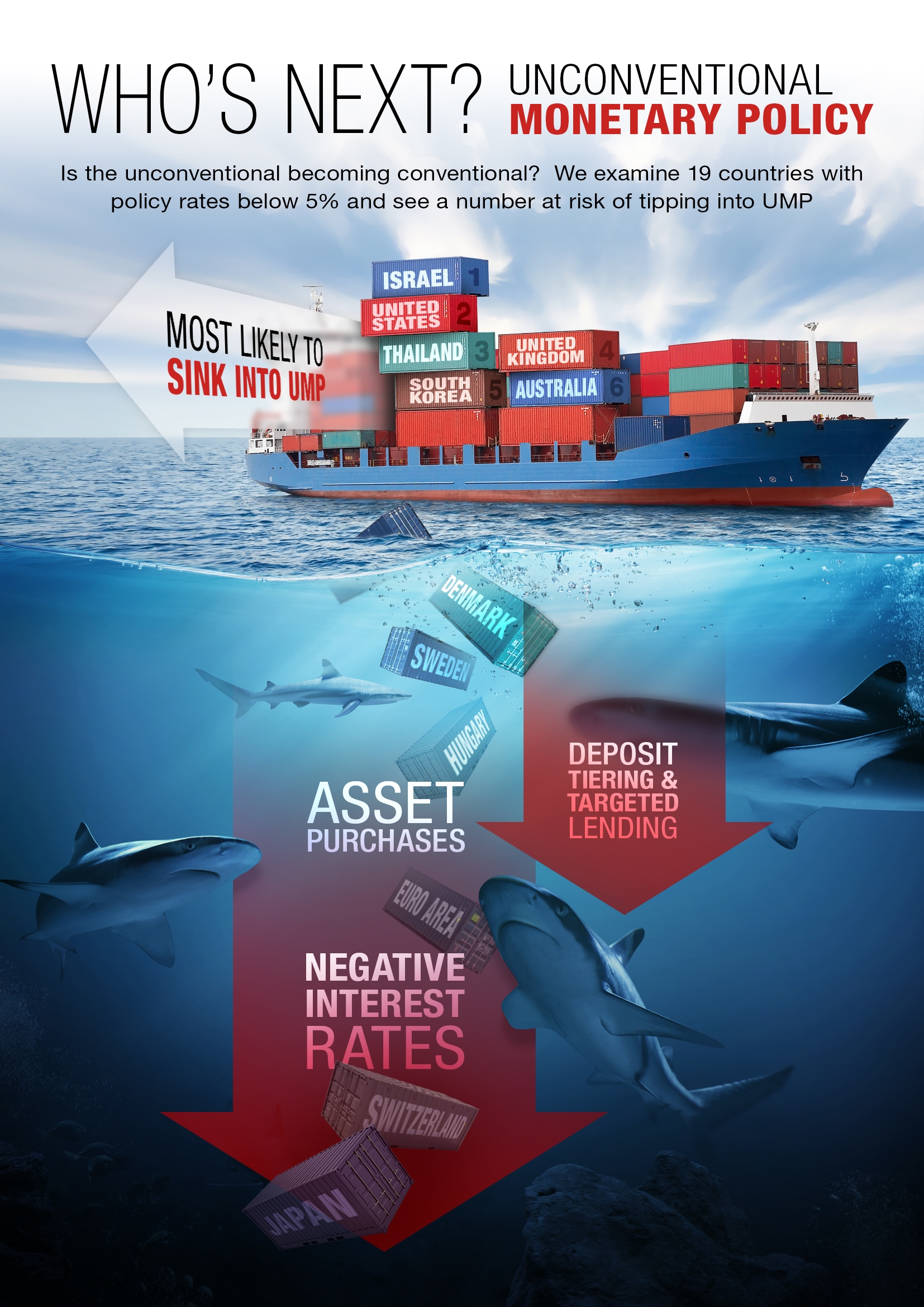Central Banks | 2 min video October 2019

Focused thinking | 4 min video | November 2019

Focused thinking | 4 min video | November 2019
The 2008-09 Great Recession forced the world’s major central banks to aggressively cut interest rates and implement unconventional monetary policies (UMP). Ten years later, UMP appears to be becoming more conventional. With the ongoing global growth slowdown, central banks in many smaller economies yet to go down the UMP path have also been lowering their policy rates and many are running short of traditional ammunition, bringing UMP into closer view. This raises the question: who could be next?
A scorecard methodology has been used to answer this question. This is based on 14 indicators for 19 countries whose central banks currently have 25-245 basis points of space left to cut policy interest rates. By identifying countries that have experienced underwhelming macroeconomic performances and are running low on traditional monetary and fiscal policy space, we assess potential contenders. The next step is to gauge how suitable UMPs might be in these 19 countries, by considering a number of different factors, including their susceptibility to negative side effects and their overall financial stability risks.
Based on all the above considerations, the scorecard suggests the central banks of Israel, US, Thailand, UK, South Korea and Australia are most likely to move to UMPs.

There is ample evidence to suggest UMPs have played a crucial role in reviving financial markets and helping economies emerge from the Great Recession, as well as helping to keep global financial conditions loose, supporting economic growth. However, this is far from saying that there are no downside risks. Central banks whose policy interest rates are approaching zero and may be contemplating whether to venture into UMPs need to be well aware of the negative side effects that can build up over time.
For more details on the positive and negative effects of UMPs and the assessment of the individual countries, read our full report here.

Head of Global Macro Research

Week Ahead Podcast Host & Australia Economist
This content has been prepared by Nomura solely for information purposes, and is not an offer to buy or sell or provide (as the case may be) or a solicitation of an offer to buy or sell or enter into any agreement with respect to any security, product, service (including but not limited to investment advisory services) or investment. The opinions expressed in the content do not constitute investment advice and independent advice should be sought where appropriate.The content contains general information only and does not take into account the individual objectives, financial situation or needs of a person. All information, opinions and estimates expressed in the content are current as of the date of publication, are subject to change without notice, and may become outdated over time. To the extent that any materials or investment services on or referred to in the content are construed to be regulated activities under the local laws of any jurisdiction and are made available to persons resident in such jurisdiction, they shall only be made available through appropriately licenced Nomura entities in that jurisdiction or otherwise through Nomura entities that are exempt from applicable licensing and regulatory requirements in that jurisdiction. For more information please go to https://www.nomuraholdings.com/policy/terms.html.
Central Banks | 2 min video October 2019
Economics | 2 min read September 2019
Central Banks | 5 min read October 2019